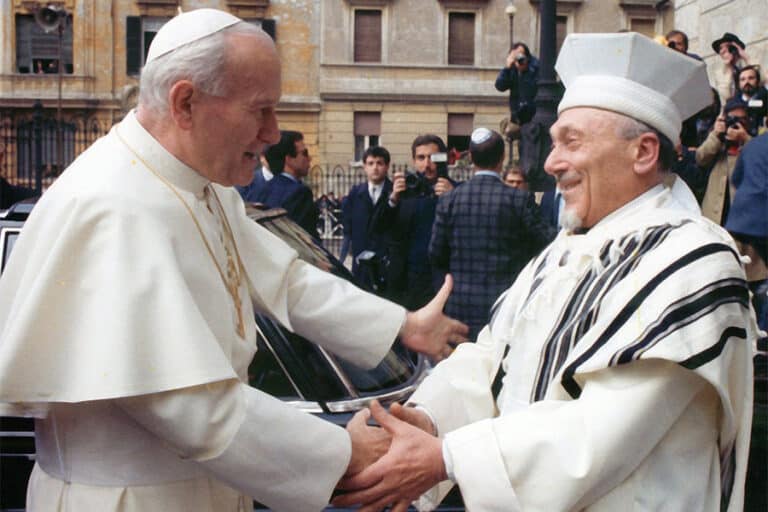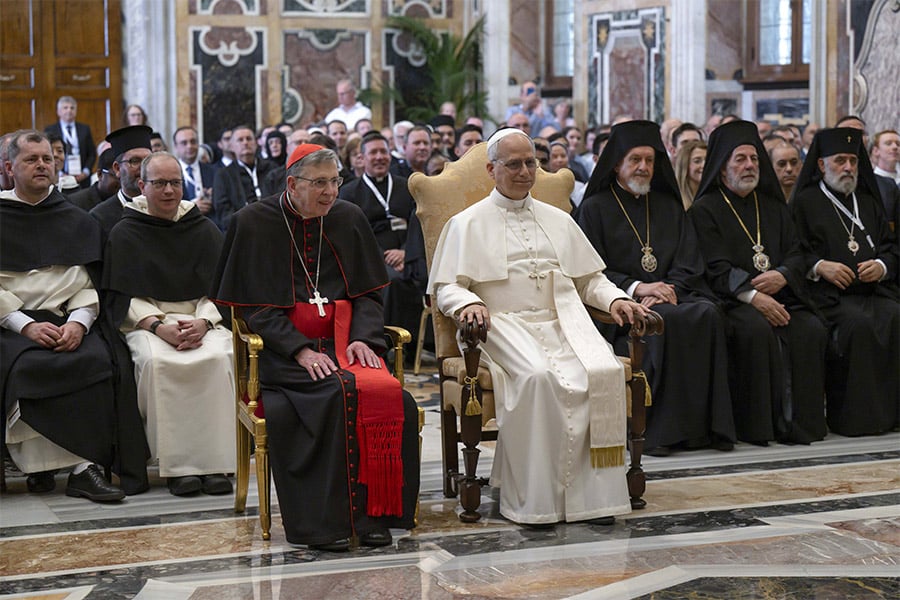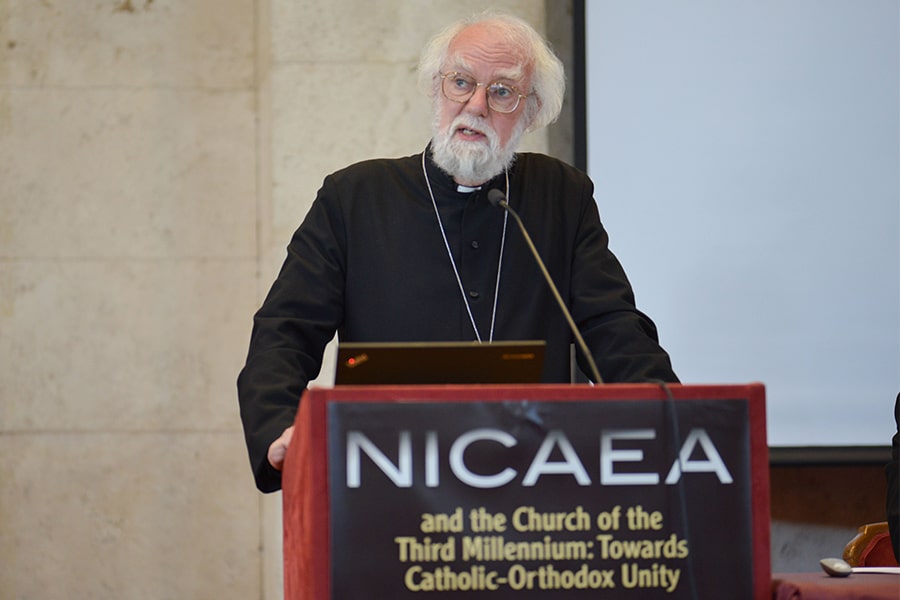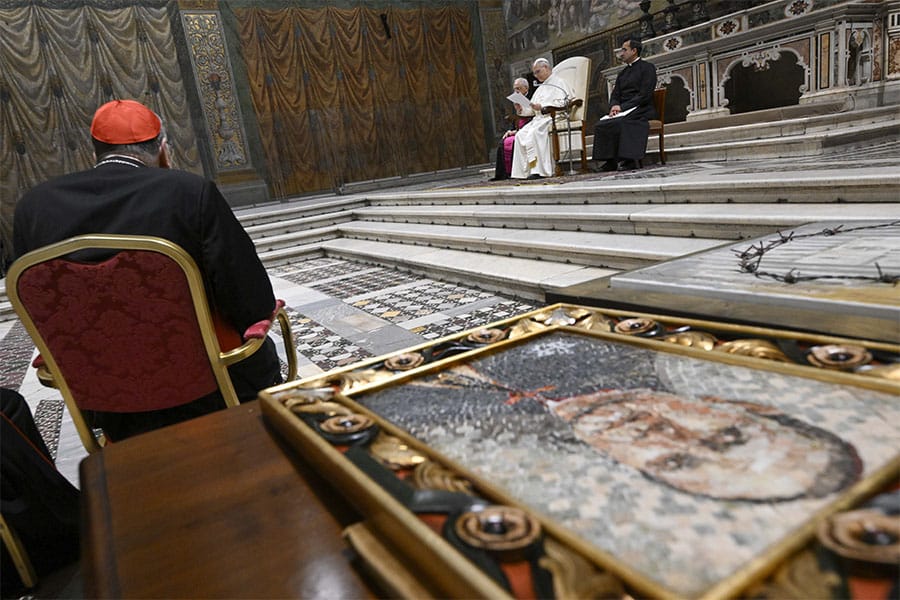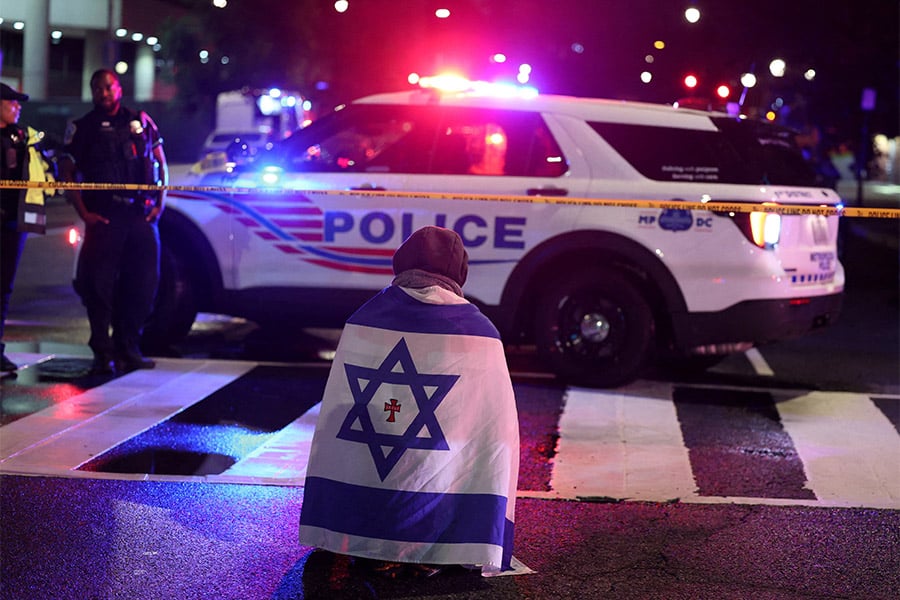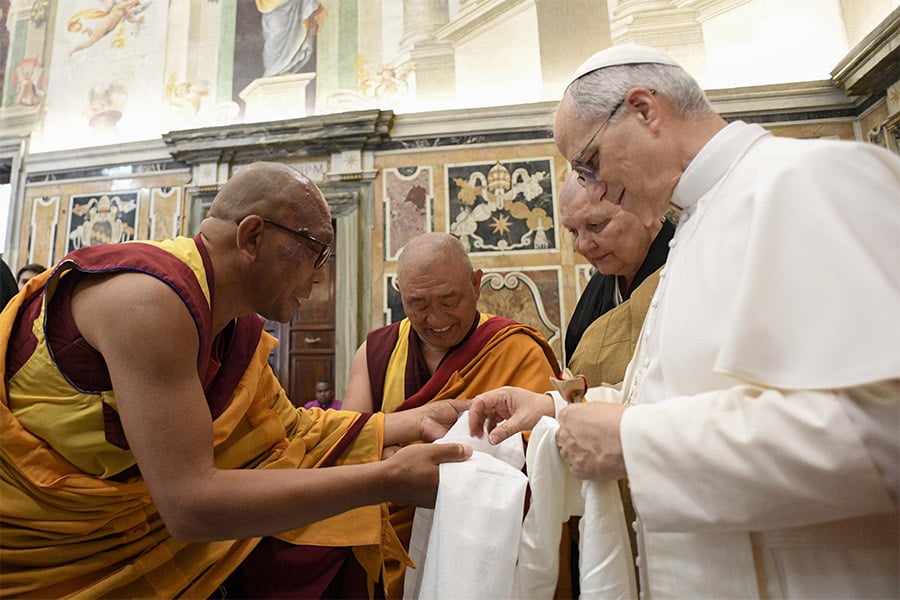St. John Paul II’s example as a strong bridge-builder between Catholicism and Judaism should be used against enduring antisemitism, especially in the wake of the Oct. 7, 2023, Hamas attacks on Israel that killed 1,200 people, according to a theologian who wrote a two-volume biography of one of the longest serving popes.
Author and senior fellow of the Washington-based Ethics and Public Policy Center, George Weigel closed a half-day conference March 10 on Catholics and antisemitism with a keynote address. The New York-based Philos Project and the Catholic Information Center in Washington hosted the conference.
Panelists from other sessions highlighted the value of meaningful interactions between Catholics and Jews, from sharing kind words of concern following the Oct. 7 attacks, to attending each other’s religious services or asking questions about each other’s faith practices they have read about.
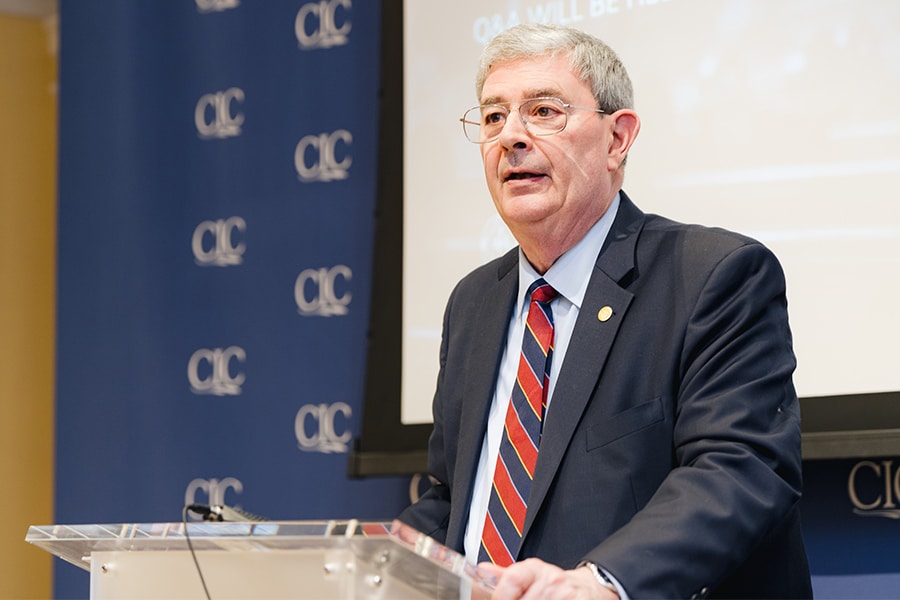
Among the panelists were those who highlighted the need to push back against social media-driven antisemitism, and those who shared why the church — particularly in the light of the Second Vatican Council’s teaching on Catholic-Jewish relations and the role of the laity to “perfect the temporal order with the spirit of the Gospel” — calls Catholics to fight the scourge of antisemitism.
“We have heard some hard truths today and these are things that have to be said — that had to be said — and they have to be repeated,” Weigel, a Baltimore native, said at the start of his remarks. “But I hope to end this encounter today on an encouraging note, reflecting on a witness to hope who accelerated the transformation of Jewish-Catholic relations into a collaboration in favor of decency, civility and the truth about the human person.”
Weigel noted that St. John Paul, throughout his more than 26 years as pope, “saw himself, and he conducted himself, as an heir of the Second Vatican Council, and its teachings on the filial debt that Christianity owes its parent, Judaism.”
He said, “It’s important to underscore this. For if John Paul II was acting idiosyncratically, then he was not bringing the full weight of the Catholic Church and its settled convictions to bear on what he said at Yad Vashem and on what he prayed at the Western Wall.”
Weigel was referring to St. John Paul’s March 2000 visit to the Holy Land. The late pontiff laid a wreath, prayed and sought “a new relationship between Christians and Jews” at the eternal flame at Yad Vashem, the World Holocaust Remembrance Center in Jerusalem. He also placed a written prayer into a crevice of Old Jerusalem’s Western Wall that expressed sadness over the persecution of Jews and sought forgiveness for the suffering it caused.
Weigel said he was confident that as a “determined foe of antisemitism,” St. John Paul would be heartbroken at the undesirable recurrence “of that ancient plague we have discussed today.” He said the saint would want people to “name that evil for what it is.”
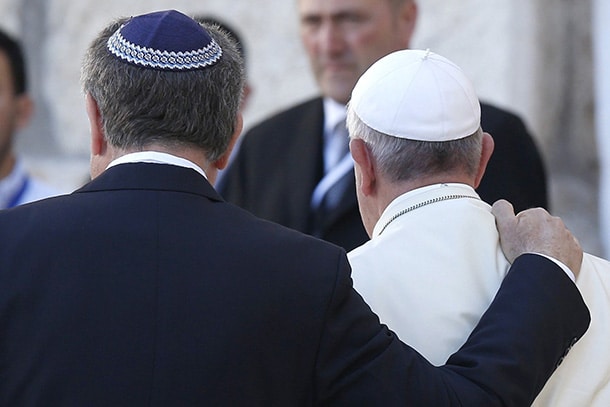
He recounted St. John Paul’s early life having grown up in Poland with Jewish friends and neighbors into young adulthood during World War II. During that war, Poland lost one fifth of its population, including nearly its entire Jewish population during the Holocaust (also known as the Shoah in Hebrew). Weigel said the war formed in the future saint, then young Karol Wojtyla, “a commitment to defend the dignity and value of every human life.”
Almost half a century later as pope, St. John Paul met with Rabbi Elio Toaff, the chief rabbi at the Synagogue of Rome, believed to be the oldest Jewish community in the West. Their historic April 13, 1986, meeting marked the beginning of a new period in Catholic-Jewish relations.
Weigel said St. John Paul believed “a new springtime,” following the 20th century — “a century of tears” as the pope called it, with its Holocaust, two world wars and Cold War — would include the state of Israel.
“His determination to finalize formal diplomatic relations between the Holy See and the state of Israel sought to remove a psychological obstacle to the theological dialogue he hoped would evolve, would intensify between Jews and Christians,” Weigel said. “And (it) would also signal to the world the Holy See’s recognition that the Jewish state was a permanent reality, which its neighbors had to recognize as such.”
The formal diplomatic agreement between Israel and the Holy See, signed in 1993 and ratified the following year, states that both parties “are committed to appropriate cooperation in combatting all forms of antisemitism and all kinds of racism and of religious intolerance, and in promoting mutual understanding among nations, tolerance among communities and respect for human life and dignity.”
In closing his address to the 230 attendees of the conference, Weigel said, “If we would honor (St. John Paul’s) memory, let us commit our minds, hearts and souls to advancing that collaboration. For that collaboration is ever more urgent today than it was 40 years ago.”
Read More Ecumenism & Interfaith Relations
Copyright © 2025 OSV News

